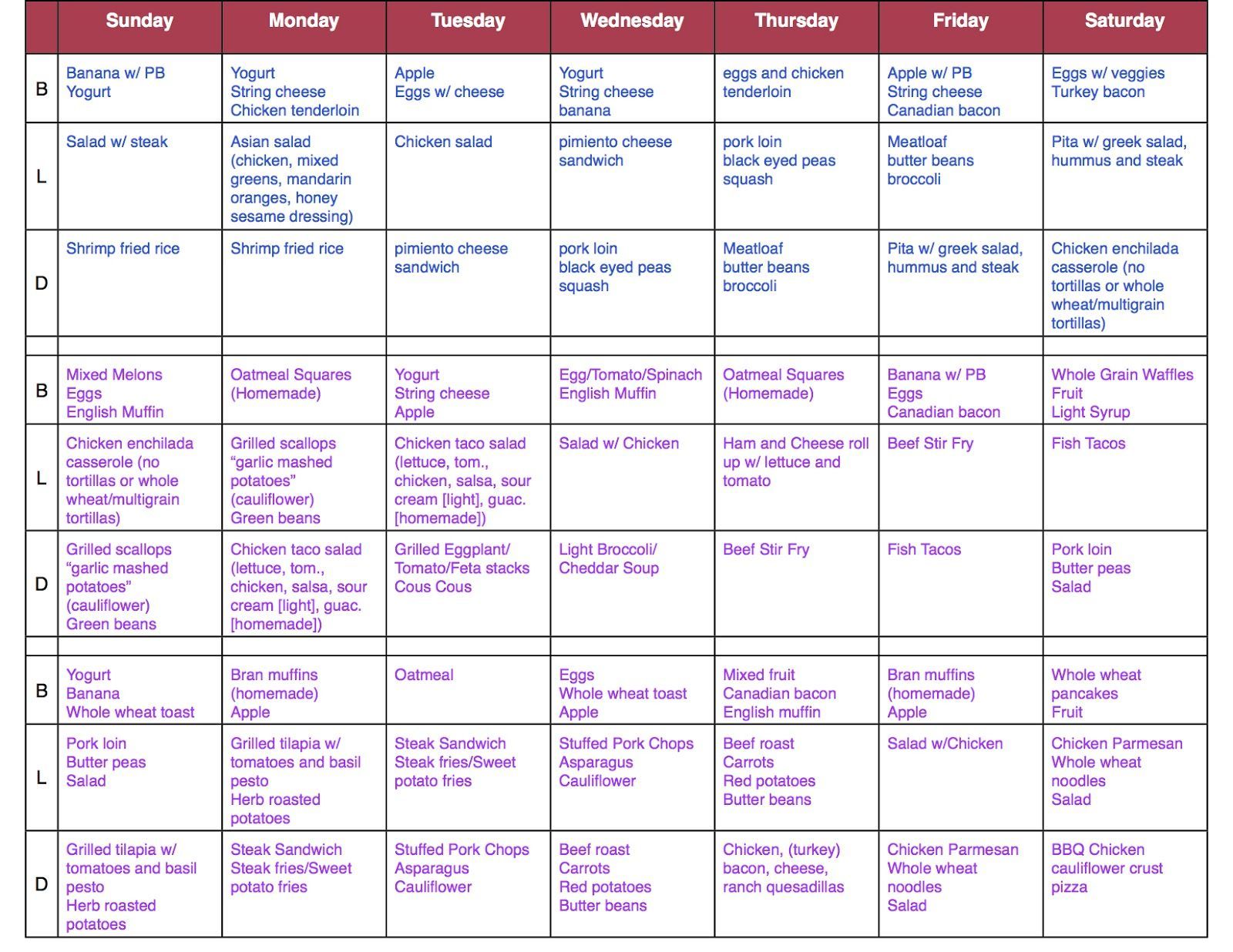Phase Two South Beach Diet marks a crucial stage in this popular weight-loss program. This phase builds upon the initial restrictions of Phase One, gradually reintroducing certain carbohydrates while maintaining a focus on healthy fats and lean proteins. Understanding the permitted foods, nutritional implications, and potential benefits and risks is key to successfully navigating this phase and achieving sustainable weight management.
This guide delves into the core principles of Phase Two, providing a detailed analysis of its nutritional composition, potential health impacts, and practical strategies for meal planning and preparation. We’ll explore sample meal plans, address common concerns, and offer insights into how Phase Two integrates into the broader context of the South Beach Diet’s overall framework for long-term success.
Recipes and Meal Ideas for Phase Two
Phase Two of the South Beach Diet introduces a wider variety of foods while still maintaining a focus on healthy fats, lean protein, and non-starchy vegetables. This phase allows for more culinary creativity, enabling you to enjoy delicious and satisfying meals that support your weight loss goals. The following recipes and meal plan provide examples of how to incorporate these principles into your daily diet.
Phase Two Recipes
These recipes are designed to be both delicious and compliant with the Phase Two guidelines of the South Beach Diet. They emphasize lean protein sources, healthy fats, and plenty of non-starchy vegetables.
Mediterranean Salmon with Asparagus
This recipe provides a healthy dose of omega-3 fatty acids from salmon, along with fiber and vitamins from asparagus. It’s quick to prepare and perfect for a weeknight dinner.
Ingredients:
- 1 salmon fillet (6-8 ounces)
- 1 bunch asparagus, trimmed
- 1 tablespoon olive oil
- 1 lemon, sliced
- Salt and pepper to taste
- 1/4 cup chopped fresh dill (optional)
Instructions:
- Preheat oven to 400°F (200°C).
- Toss asparagus with 1/2 tablespoon olive oil, salt, and pepper. Spread on a baking sheet.
- Place salmon fillet on the same baking sheet. Drizzle with remaining olive oil, salt, pepper, and lemon slices.
- Bake for 12-15 minutes, or until salmon is cooked through and asparagus is tender-crisp.
- Garnish with fresh dill (optional) before serving.
Chicken and Vegetable Stir-Fry
A quick and easy stir-fry is a great way to incorporate a variety of vegetables and lean protein into your diet. This recipe is adaptable to whatever vegetables you have on hand.
Ingredients:
- 1 pound boneless, skinless chicken breast, cut into strips
- 1 tablespoon olive oil
- 1 cup broccoli florets
- 1 cup sliced bell peppers (any color)
- 1/2 cup sliced mushrooms
- 1/4 cup soy sauce (low sodium)
- 2 cloves garlic, minced
- 1 teaspoon grated ginger
Instructions:
- Heat olive oil in a large skillet or wok over medium-high heat.
- Add chicken and cook until browned and cooked through.
- Add broccoli, bell peppers, and mushrooms. Stir-fry for 5-7 minutes, or until vegetables are tender-crisp.
- Stir in soy sauce, garlic, and ginger. Cook for another minute.
- Serve immediately.
Turkey and Avocado Salad
This salad is a great option for lunch or a light dinner. The healthy fats from the avocado provide satiety and help you feel full longer.
Ingredients:
- 4 ounces sliced turkey breast
- 1/2 avocado, diced
- 1/4 cup chopped cherry tomatoes
- 1/4 cup chopped cucumber
- 2 tablespoons olive oil
- 1 tablespoon lemon juice
- Salt and pepper to taste
Instructions:
- Combine turkey, avocado, tomatoes, and cucumber in a bowl.
- Whisk together olive oil, lemon juice, salt, and pepper.
- Pour dressing over salad and toss to combine.
- Serve immediately.
Sample Weekly Meal Plan Infographic
The infographic would visually represent a balanced weekly meal plan adhering to Phase Two guidelines. It would be organized by day, with each day featuring breakfast, lunch, and dinner options. The visual elements would include icons representing food groups (lean protein, healthy fats, non-starchy vegetables, fruits in moderation). Each meal would be depicted with a small, stylized image or icon. The overall color scheme would be bright and inviting, using a combination of greens, blues, and oranges to represent the healthy foods. A clear and concise title, “Phase Two South Beach Diet Weekly Meal Plan,” would be prominently displayed at the top. The days of the week would be clearly labeled, and each meal would be briefly described below its icon (e.g., “Salmon with Asparagus,” “Turkey and Avocado Salad,” “Chicken Stir-fry”). The infographic would also include a small section with tips for meal prepping and portion control.
Tips for Convenient and Enjoyable Phase Two Meals
Making Phase Two of the South Beach Diet convenient and enjoyable requires planning and some smart strategies.
Meal prepping is key. Prepare ingredients or even entire meals in advance on the weekend. This will save time during the week and prevent impulsive unhealthy choices. Batch cooking is your friend. Double or triple recipes and freeze portions for future meals. Utilize leftovers creatively. Turn leftover chicken into a salad or soup the next day. Embrace simple recipes. Choose recipes with minimal ingredients and steps to save time and effort. Keep healthy snacks readily available. Stock your pantry and refrigerator with nuts, seeds, fruits (in moderation), and vegetables for easy snacking. Don’t be afraid to experiment with new recipes and flavors. The South Beach Diet doesn’t have to be boring! Find recipes you enjoy and stick to them.
Conclusion
Successfully navigating Phase Two of the South Beach Diet requires careful planning and adherence to the program’s guidelines. While offering significant potential benefits in weight loss and improved metabolic health, understanding the potential risks and implementing mitigation strategies are crucial. By combining knowledge of permitted foods, nutritional considerations, and practical meal planning techniques, individuals can effectively utilize Phase Two to achieve their weight management goals and cultivate healthier long-term eating habits. Remember to consult with a healthcare professional before making significant dietary changes.



